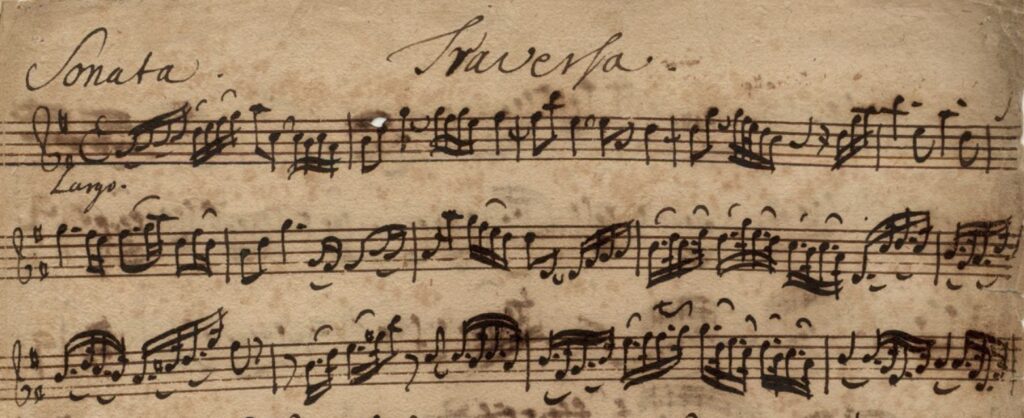The sonata for violin and basso continuo in G major, BWV 1021, is one of the few pieces for this configuration composed by Bach. It’s considered the “sister” sonata of BWV 1023 in C major which we listened to a couple of sessions ago. It survives in a fair copy by Bach’s wife, Anna Magdalena.
Like BWV 1023, this sonata also features a very richly figured bass line, which was in all likelihood intended as a teaching tool. In fact, this bass line is similar to the one in the trio sonata for flute, violin and basso continuo, BWV 1038, which scholars believe could have been a composition assignment given by Bach to a young Carl Philipp Emmanuel, using the bass line of 1021 as a starting point.
The sonata is in the Italian “da chiesa” style of alternating slow-fast-slow-fast movements. It opens with a richly ornamental Adagio in two repeating sections, which leads to a very short triple-meter Vivace. The Largo that follows, also very lyrical, explores the low end of the violin register unlike the previous movements. It leads to a Presto in “cut time”, in which the bass line leads with a fugue-like theme that the violin then imitates. In the flute and violin trio version of the piece, mentioned before, this movement is more developed and it becomes a true fugue in three parts.
